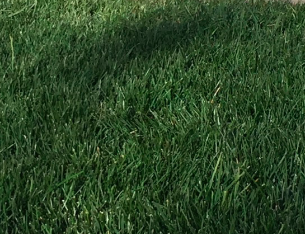Golf courses, Kermit, and my natural lawn?!?
It's spring time and things are turning green everywhere. Well, almost everywhere. In my quest to reduce the number of chemicals in my world I have been adamant about not using chemicals on our yard (see the post I wrote about corn gluten here). But the lack of fertilizer and chemicals is taking a toll on our lawn, especially given the addition of our puppy. So I started doing some research on what I can do to bring back the glory of our former yard. So as I do, I started doing some research. I was shocked by some of the facts I found and figured I would share some of them with you before I delve into the solutions.
According to the U.S. National Wildlife Federation:
- 30% of water used on the East Coast goes to watering lawns; 60% on the West Coast.
- 18% of municipal solid waste is composed of yard waste.
- The average suburban lawn received 10 times as much chemical pesticide per acre as farmland.
- Over 70 million tons of fertilizers and pesticides are applied to residential lawns and gardens annually.
- Per hour of operation, a gas lawn mower emits 10-12 times as much hydrocarbon as a typical auto. A weed eater emits 21 times more and a leaf blower 34 times more.
- Pesticides kill 60 – 90% of earthworms when applied. Earthworms are important for soil health.
The good news is there are more and more companies coming out with more natural solutions. This website allows you to find one in your state.
The research then led me to try to determine the type of seed that is best for my part of the country. The following are the things to consider: climate, amount of sun, and how much, and what kind of, traffic the grass will get. You can determine the right seed here. - Aerate in the spring if needed to improve soil texture. You can get a cheap aerater at any department store. I even used my high heels one year. Gotta use what you got ;)
- Fertilize the lawn once a year, by topdressing - add up to an inch of compost or topsoil and rake it into the grass.
- Test the lawn and add pH adjusters if needed to get the pH in optimal range. Here are two ideas for doing this without a kit.



Comments
Post a Comment